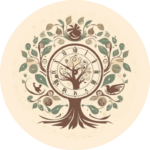In the UK today, only 1% of babies are exclusively breastfed by the time they are six months old, as recommended by the World Health Organization. Even fewer infants are breastfed by their first birthday; extended breastfeeding, nursing beyond that age, is rarer still. Yet it was not always so.
Motherhood and Wet Nurses: Breastfeeding in Early Modern Times
If you were living in early modern England (say in the 17th century), there were so many things to consider after you had a baby. But one of the main decisions had to do with breastfeeding: should the mother feed the child herself, or should a wet nurse be hired? (A wet nurse was someone whose job was to care for and breastfeed the baby.)



